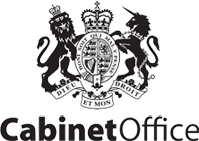News & blog
Hybrid Fundraising into the New Year
Last year many charities found new ways to encourage donations. 83%* small charities had to rethink their fundraising activities and over half found digital fundraising to be a new and important channel for their organisation. There’s no denying that fundraising has dramatically changed in the past year and many of the new channels will continue to be used.
With learnings from fundraising last year, charities are planning virtual events with as much creativity as physical ones. Virtual rain walks (backdrop sound to create theatrical ambience), virtual city bus tours, online religious festivals and sponsored chess and bridge competitions have all been part of 2020 charity fundraising. Additionally many have used social media marketing to promote their events.
Looking forward to 2021, we will see such initiatives become hybrid events as we come out of Lockdown. We predict that large-scale real-world events will not re-materialise until the end of 2021 if not in 2022. Instead, live fundraising events will exist for those that are willing to attend with online participation becoming part of the event. Get ready for large screens, online participants joining in with in-venue guests and vice versa. Charities who invest in the best technical providers, use creativity to deliver compelling and engaging events and avoid shoehorning traditional events into hybrid ones will be the winners.
This year local charity, Seaton Tramway will be using digital fundraising platforms to support their virtual events. In June the charity is hosting a “Tramathon” fundraising appeal, which will see the Seaton Tramway go live on Facebook with 24 hours continuous driving. Viewers will watch the tram live, learn about the tramway through Q&A’s and take part in a giveaway to win prizes and experiences as fundraising milestones are met.

When hosting a virtual fundraising event with giveaways to entice viewers, charities must use a simple and immediate fundraising route (such as DONATE), provide digital stewardship such as real-time thank-yous, totalisers and integration with social media posts.
The benefits of virtual events are not only improved reach but the reduced cost of putting on a live event. New audiences that traditionally would not have attended in person can now participate. Celebrities can participate with cameo performances without the need to take a whole day out of their schedule. When Food 4 Heroes ran an online auction during 2020, they sought the help of cricketing and Test Match Special star Phil Tufnell for the final countdown hour.

With so many virtual fundraising events due to run this year, incorporating a physical element will boost awareness. Activities like bike rides and fun runs can be virtual but the individual can be physically involved at home. That way they get to complete the challenge in their own time and the element of competition comes from the totaliser or social media shares. Examples range from the highly publicised (eg the 2020, run-at-home London Marathon) through to the local, such as the London Dynamo Cycling Club’s Summer eRoad Race. Using the cycling platform Zwift, members could clock up miles and compete with others in their club and raise money at the same time for the local children’s hospital.

Charities can also take inspiration from each other and buddy up to share learnings from previous fundraising events, both physical and virtual, and to potentially host joint events. Networks like Guild.co can also prove helpful for smaller charities to share ideas, learnings and build up contacts. If not already a member contact The Forge Communications (fiona@theforgecommunications.com) to learn how to join CAFE (Corona Affected Fundraising Events).
2021 is set to be a year of great fundraising, made even better because of the learnings from previous fundraisers, both virtual and physical.






